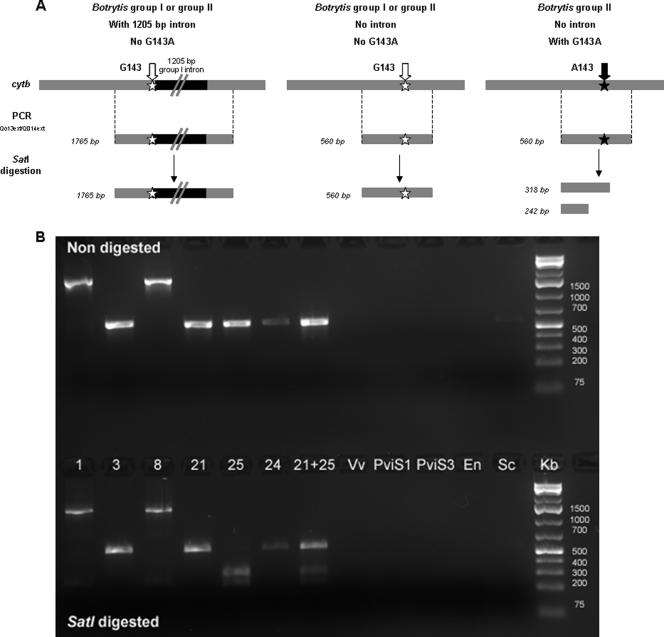FIG. 3.
Molecular polymorphism of the gene encoding cytochrome b (cytb) in strains of Botrytis group I and group II. (A) Possible structure of cytb according to the presence of the 1,205-bp group I intron and/or the G143A change and possible results observed after CAPS analyses. Presence of the intron changes the length of the PCR fragment, either in Botrytis group I or II. The G143A change was found only in Botrytis group II strains without the 1,205-bp intron. The mutation in cytb is recognized by the SatI restriction enzyme and leads to a two-band pattern after digestion of the PCR fragment. (B) Ethidium bromide-stained gel of PCR fragments subjected to electrophoresis after Qo13ext/Qo14ext amplification of the cytochrome b gene in Botrytis group I and group II (first row) and after SatI digestion of these fragments (second row) (CAPS test). Strains 1 and 3, Botrytis group I with and without intron, respectively; strains 8, 21, 24, and 25, Botrytis group II. Strain 25 is strobilurin resistant (Table 1). Strain 8 exhibits an intron after codon 143. Vv, Vitis vinifera (grapevine); PviS1 and PviS3, Plasmopara viticola (downy mildew; PViS3 is strobilurin resistant); En, Erysiphe necator (powdery mildew); Sc, Saccharomyces cerevisiae (yeast).

